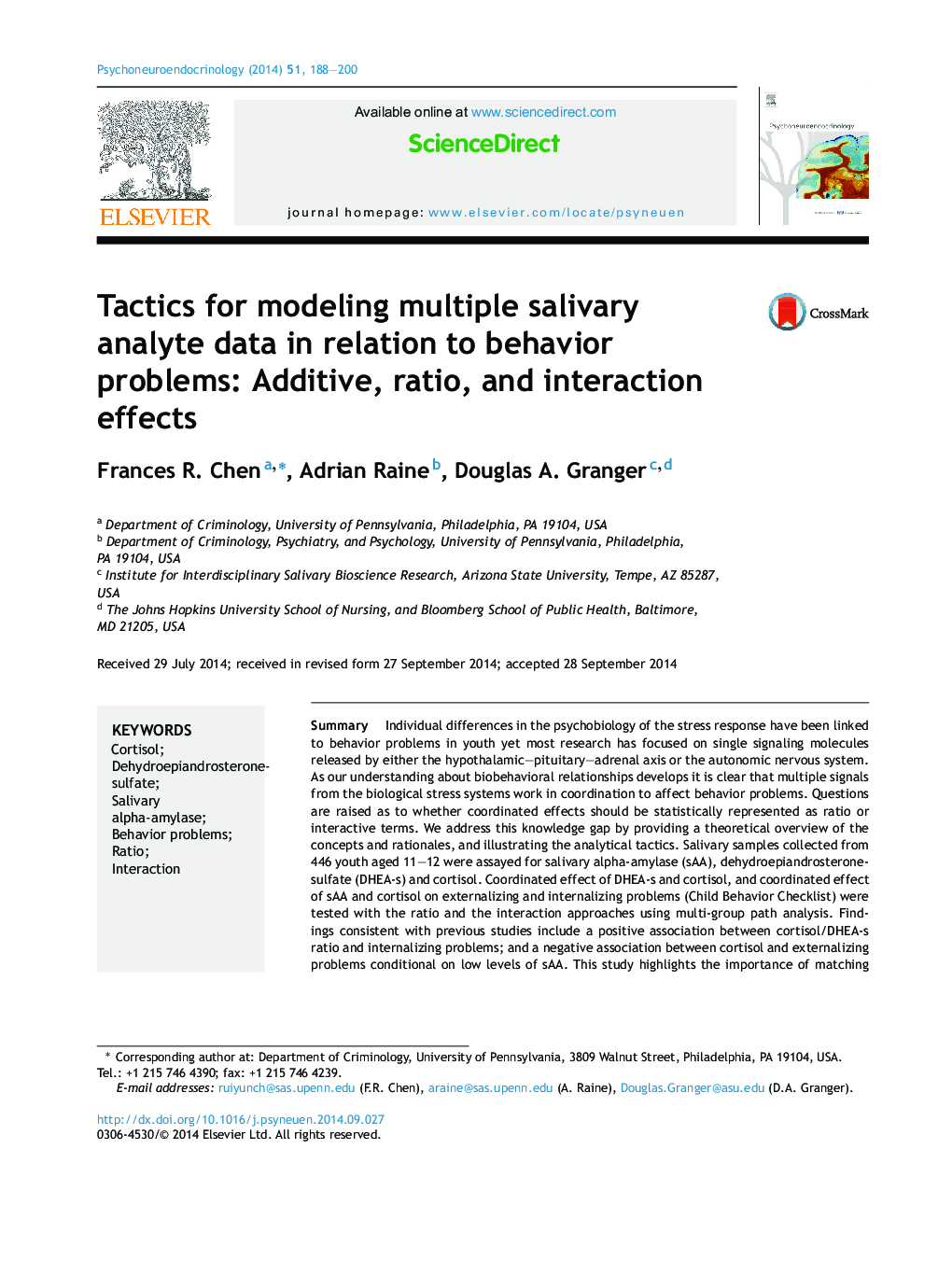| Article ID | Journal | Published Year | Pages | File Type |
|---|---|---|---|---|
| 6819344 | Psychoneuroendocrinology | 2015 | 13 Pages |
Abstract
Individual differences in the psychobiology of the stress response have been linked to behavior problems in youth yet most research has focused on single signaling molecules released by either the hypothalamic-pituitary-adrenal axis or the autonomic nervous system. As our understanding about biobehavioral relationships develops it is clear that multiple signals from the biological stress systems work in coordination to affect behavior problems. Questions are raised as to whether coordinated effects should be statistically represented as ratio or interactive terms. We address this knowledge gap by providing a theoretical overview of the concepts and rationales, and illustrating the analytical tactics. Salivary samples collected from 446 youth aged 11-12 were assayed for salivary alpha-amylase (sAA), dehydroepiandrosterone-sulfate (DHEA-s) and cortisol. Coordinated effect of DHEA-s and cortisol, and coordinated effect of sAA and cortisol on externalizing and internalizing problems (Child Behavior Checklist) were tested with the ratio and the interaction approaches using multi-group path analysis. Findings consistent with previous studies include a positive association between cortisol/DHEA-s ratio and internalizing problems; and a negative association between cortisol and externalizing problems conditional on low levels of sAA. This study highlights the importance of matching analytical strategy with research hypothesis when integrating salivary bioscience into research in behavior problems. Recommendations are made for investigating multiple salivary analytes in relation to behavior problems.
Keywords
Related Topics
Life Sciences
Biochemistry, Genetics and Molecular Biology
Endocrinology
Authors
Frances R. Chen, Adrian Raine, Douglas A. Granger,
